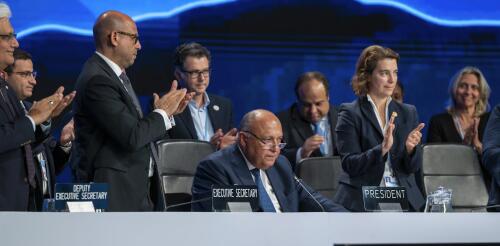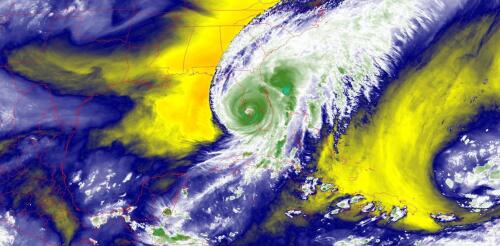Global warming
Developing nations were justifiably jubilant at the close of COP27 as negotiators from wealthy countries around the world agreed for the first time to establish a dedicated “loss and damage” fund for vulnerable countries harmed by climate change. It was an important and hard fought acknowledgment of the damage – and of who bears at least some responsibility for the cost. But the fund might not materialize in the way that developing countries hope. I study global environmental policy and have been following climate negotiations from their inception at the 1992 Rio Earth Summit. Here’s what’s in the agreement reached at COP27, the United Nations climate talks in Egypt in November 2022, and why it holds much promise but very few commitments. 3 key questions All decisions at these U.N. climate conferences – always – are promissory notes. And the legacy of climate negotiations is one of promises not kept. This promise, welcome as it is,...
In London, youth activists threw soup at Van Gogh’s “Sunflowers,” asking, “Is art worth more than life? More than food? More than justice?” In Melbourne, Australia, two protesters superglued themselves to Picasso’s “Massacre in Korea” to highlight the connections between climate change and future conflict and suffering. Others have engaged in similar protests, targeting a Boticelli at the Uffizi Gallery in Florence, Italy; an ancient Roman statue at the Vatican; a Klimt in Vienna; and a mummy exhibit at Barcelona’s Egyptian Museum. Their actions have incited mixed responses around the world. Some people praised the activists’ daring and ingenuity; others lambasted the groups for polarizing the fight for climate justice, sending mixed messages and using plain poor logic. But tactics like these draw media attention and make a lasting impression, and that’s the point – especially right now....
The world could still, theoretically, meet its goal of keeping global warming under 1.5 degrees Celsius, a level many scientists consider a dangerous threshold. Realistically, that’s unlikely to happen. Part of the problem was evident at COP27, the United Nations climate conference in Egypt. While nations’ climate negotiators were successfully fighting to “keep 1.5 alive” as the global goal in the official agreement, reached Nov. 20, 2022, some of their countries were negotiating new fossil fuel deals, driven in part by the global energy crisis. Any expansion of fossil fuels – the primary driver of climate change – makes keeping warming under 1.5 C (2.7 Fahrenheit) compared to pre-industrial times much harder. Attempts at the climate talks to get all countries to agree to phase out coal, oil, natural gas and all fossil fuel subsidies failed. And countries have done little to strengthen their commitments to cut greenhouse gas emissions in the...
At first glance, the connections between the world’s growing population and climate change seem obvious. The more people we have on this planet, the larger their collective impact on the climate. However, a closer look with a longer time horizon reveals relationships between population size and climate change that can help us better understand both humanity’s predicament as the global population hits 8 billion people – a milestone the United Nations marked on Nov. 15, 2022. Looking back to the Stone Age For much of human evolution, our ancestors were exposed to large climatic fluctuations between ice ages and intermittent warmer periods. The last of these ice ages ended about 10,000 years ago. Before the ice sheets melted, sea levels were about 400 feet (120 meters) lower than today. That allowed humans to migrate around the world. Everywhere they went, our ancestors reshaped landscapes, first by clearing forests and then through early agricultural practices...
Hurricane Ian hit Florida in September 2022 as one of the United States’ most powerful hurricanes on record, and it followed a two-week string of massive, devastating storms around the world. A few days earlier in the Philippines, Typhoon Noru gave new meaning to rapid intensification when it blew up from a tropical storm with 50 mph winds to a Category 5 monster with 155 mph winds the next day. Hurricane Fiona flooded Puerto Rico, then became Canada’s most intense storm on record. Typhoon Merbok gained strength over a warm Pacific Ocean and tore up over 1,000 miles of the Alaska coast. Major storms hit from the Philippines in the western Pacific to the Canary Islands in the eastern Atlantic, to Japan and Florida in the middle latitudes and western Alaska and the Canadian Maritimes in the high latitudes. A lot of people are asking about the role rising global temperatures play in storms like these. It’s not always a simple answer....




